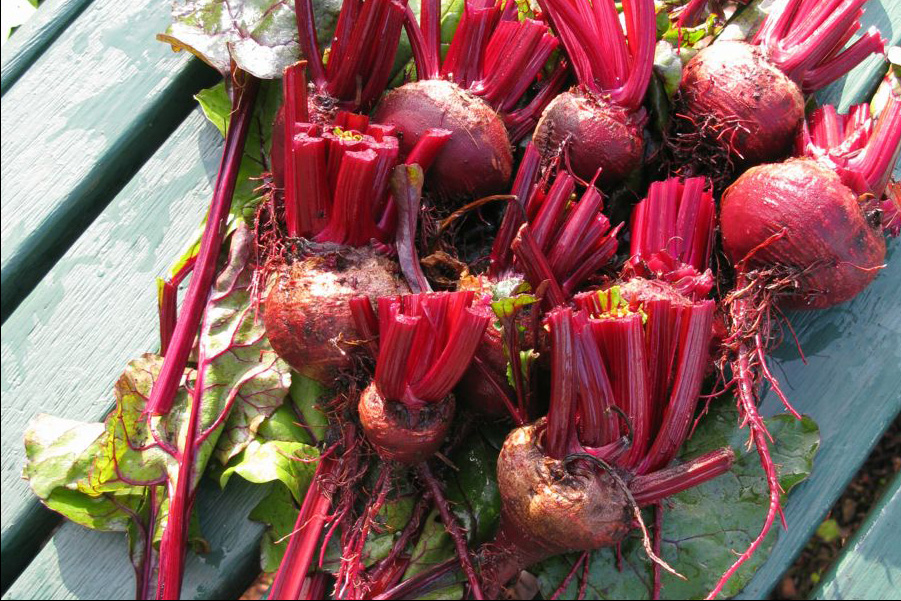Botanical name:
Beta vulgaris
Description:
Beetroots are actually the same plant as the silverbeet and the rainbow chard. Farmers selectively bred cultivars with big, tender swollen taproots, which is the actual vegetable. They grow about 40 cm high.
The leaves are egg-shaped or oblong and show colourful veins. While most cultivars have red beets, there are also yellow, orange and white-striped cultivars. The colour from red beetroot easily stains. After consumption it even temporarily colours urine red, which is perfectly safe and of no concern.
It is reported to be a good source of folate, anti-oxidants and B3, B5 and B6 vitamins. Beetroot is a high oxalate plant which can be of concern for people with a tendency to kidney stones, but is considered save if not eaten excessively.
How to grow:
Sow 12 mm deep directly into a light, well drained soil. Soaking the seeds a few hours before planting gives them a good headstart. It also allows to separate the seeds that come in little clumps and are prone to a lot of competition if left stuck together.
Beetroot loves a sunny spot and needs consistent watering. Seedlings appear after 10 days. Thin out to a 10 to 30 cm spacing, depending on what you are aiming for – baby beetroots or big mature ones.
Keep the bulb of the taproot lightly covered in soil, so it doesn’t dry out and get’s corky. Mulching the beds helps to keep the soil moist and cool.
Doesn’t need much fertilising.
8 to 12 weeks to harvest.
Growing in the neighbourhood:
Companions are onions, silverbeet, all kinds of lettuce, members of the cabbage and legume families. Doesn’t like to have sweet corn, spinach and carrots in the same bed.
Pests and other problems and how we deal with them:
Caterpillars of butterflies and moths are pests on beetroots. We keep them out by netting the bed with a 5-10 mm net as long as the plants are small. A bit of leaf loss on mature plants is tolerable, if caterpillars take away too much leaf material we spray the plants with a bacterial solution that controls them.
Beetroots stall growth if deficient on boron.
Season:
Late Winter to late Summer
Seed-saving:
Beetroots cross pollinate with other plants of the amaranth family. In order to collect useful seeds the mother-plant would need to be kept isolated.
How to harvest and use:
When thinning out beetroot plants in the garden, young leaves can be used as a colourful addition to herb salads. Beetroots should be harvested when the beets are 5 to 10 cm in diameter. Leaves and the thin part of the root are good for compost.
All parts of the beetroot show a distinct earthy flavour.
Beetroots are a very versatile vegetable and can be eaten raw and cooked. They are great grated in salads and can be pickled. Beetroots can be used as roast vegetable. They are better cooked in the skin and peeled later if cooked in water, to avoid loosing a lot of their beautiful colour. They are great roasted wrapped in aluminum foil and peeled later as well.
